
14-16 St John Street
Highlights
▪ Grade II listed part of former Blackamoor’s or Black’s Head Inn (14-20 St John St)
▪ Probably dates to early-18th century
▪ Inn proprietors can be traced from 1758
▪ Ceased to be an inn in 1825 then split into two properties, 14-16 & 18-20
▪ 14-16 then occupied by:
➢ The Hurd Wood family until 1857
➢ Marple’s drapery 1859-1929
➢ Derby Co-operative drapery 1929-81
➢ Boarding house 1930s-40s (upper floors)
▪ Converted to two shop units and offices (upper floors) in 1981
▪ Offices converted into residential flats by the mid-2000s
More information
14-16 St John St was built as one building with numbers 18-20 St John St. It is on the south side of the street between the Horse &Jockey yard (on the left/east side) and Hood’s Yard (on the right/west side).
The Building
The Grade 2 listings suggests that it is late-18thcentury but the Blackamoor’s (Black’s) Head Inn, as a name, goes back to the early 18th century. Built with bricks of similar size to the Green Man, the Blackamoor’s (Black’s) Head Inn was probably rebuilt no later than the mid-18th century.
14-16 St John St is stuccoed with moulded plaster eaves. It is three storeys high with four flat headed windows with boxed frames, sashes with glazing bars on the first and second floors. The ground floor shop fronts are late 19thcentury or early 20th century. The central doorway is arched Roman style with moulded pilasters/architraves and glazed cobweb fanlight (see below).

The History of its Occupation and Use
Theearliest mention of the Blackamoor’s Head thus far found in newspapers dates to 1727 when Mr Meller/Mellor was the proprietor (see below). He would remain there until at least 1744.
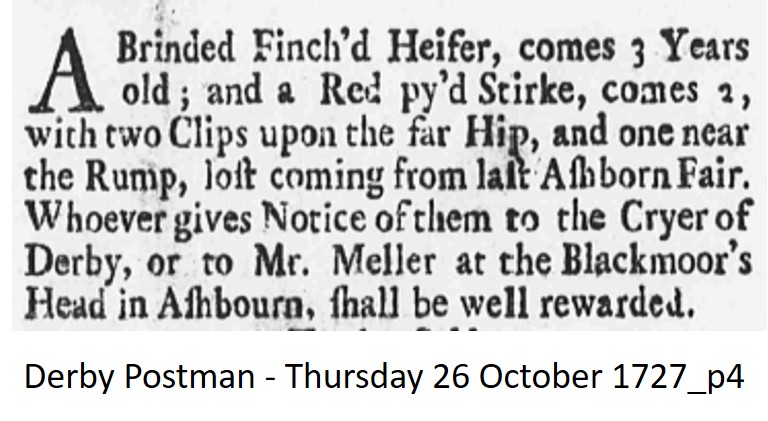
A continuous series of proprietors can be traced from 1758 to 1825:
1758-74: James Davenport
1775-95: Charles Houghton and his wife Ann
1796-1807: WilliamHolyoak
1808-17: RogerBroadhurst
1818-19: Smith & Hall
1820-21: Tarbatt & Hall
1822-25: John Thompson
Land Tax records show that a Mr Davenport was the owner of 14-20 St John St 1780-89 and this is presumably James Davenport who had been the occupier/landlord until 1774. From 1790-1825, the owner was Sir Brooke Boothby of Ashbourne Hall.
During the period when it was the Blackamoor’s/Black’s Head, it was a regular venuef or auctions advertised in the Derby Mercury and it also hosted meetings of the trustees of two turnpike (toll) roads:
1) Derby to Ashbourne to Hurdloe House: 1784-1813. Derby to Ashbourne is the present day A52 and Ashbourne to Hurdloe House, now known as the Bull i’ t’ Thorn, is the A515.
2) Ashbourne to Belper Openwood Gate & Belper to Ripley:1 790-1823. Ashbourne to Belper is the present day A517.
Sir Brooke Boothby passed away in 1824 and, subsequently, the building was sold and ceased to be an inn.
The purchaser was John Wood, proprietor of the Green Man, and by 1828 14-20 St John St had been split into three properties. Two fronting the street were occupied by Thomas Brittlebank, attorney (14-16 St John St) and Mr & Mrs Charles Hayward, draper (18-20 St John St) who had moved from 12 St John St. The third part, which consisted of the yard and stables at the back, were used by John Wood himself.
From hereon, 14-16 and 18-20 St John St are dealt with separately.
14-16 St John St:
Thomas Brittlebank did not stay long and his place was soon taken by William Hurd who married John Wood’s daughter and took on the name William Hurd Wood. Upon John Wood’s death in 1832, William Hurd Wood inherited his estate and continued living at 14-16 St John St until 1857.
William was a director of the Staffordshire & North Midland Junction Railway which formed in 1845 to build a railway Uttoxeter-Rocester-Ashbourne-Wirksworth-Cromford-Matlock-Chesterfield. Had this railway line ever been built the future of Ashbourne could have been quite different. Ashbourne would have to wait for its rail connection until 1852 when the North Staffordshire Railway completed its Rocester-Ashbourne branch line.
The 1857 sale notice (see below) described the property, which is shown on the 1849 tithe map (see also below), as follows:
“…with a frontage of forty-seven feet…comprising entrance hall, dining room, 20ft 6in by 17ft; breakfast room, drawing room, 21ft 3in, by 18ft 6in; seven bed-rooms, spacious kitchen, scullery, butler’s pantry, with ante rooms, larder, brewhouse, with pump; extensive cellars, and other offices, yard, garden, and pleasure ground, and range of buildings, about 28 yards in length, consisting of carriage shed, coach house, stable, saddle house, and rooms over the whole.
Also, a spacious Yard or Plot of Land, adjoining the above, with a range of workshops, stables, and other edifices, about seventy yards in length, with a carriage house near the same, in the respective occupations of Mr. Edmund Hurd, Mr. Coxon, grocer; Mr. Coxon, butcher; Mr. Wibberley, and Mr. Thompson, stonemason.
The property extends from the north side of St John’s-street to the river Henmore, and has a frontage to the river of 45 yards. The area of the property is about 3,000 square yards.”
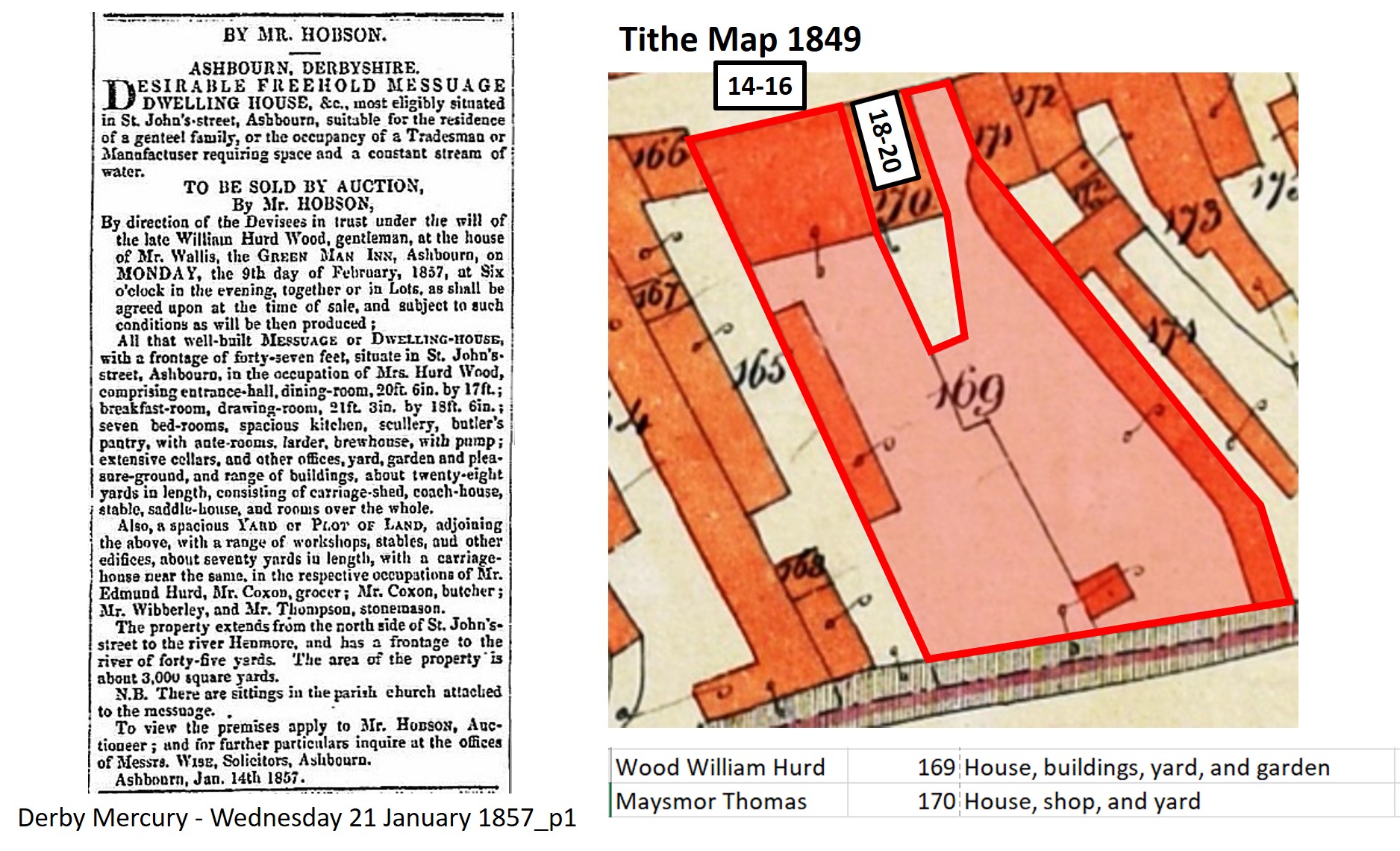
The purchaser was William Robert Marple, a draper who had been in partnership with Mr. W. Whittaker for a number of years at 12 St John St.
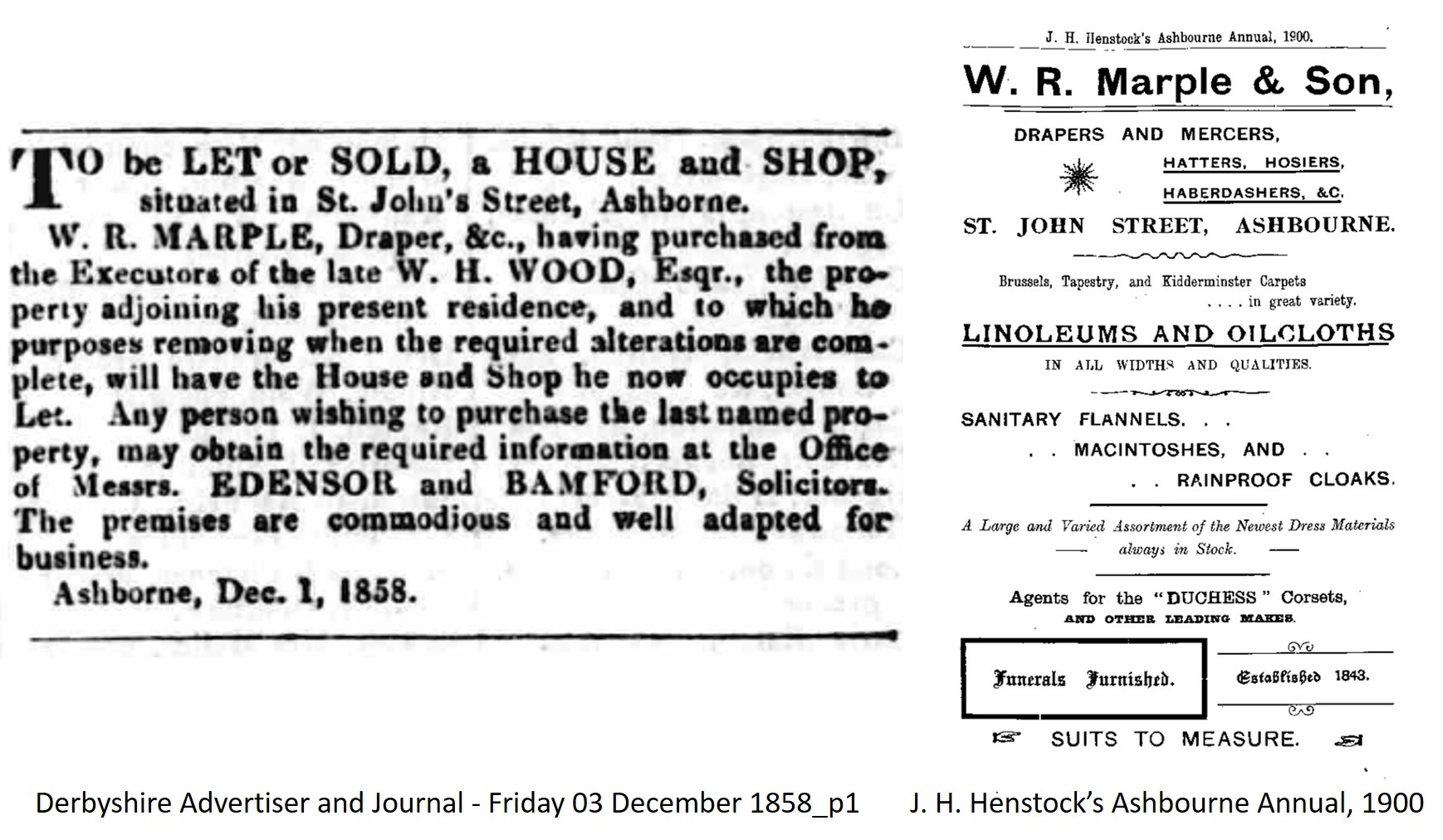

Derby Co-operative Drapery Department took over Marple’s in 1929 and the upper floors were used as a boarding house by Mrs Spencer/Barker. Around this time 14-16 StJohn St acquired the name Milton House.
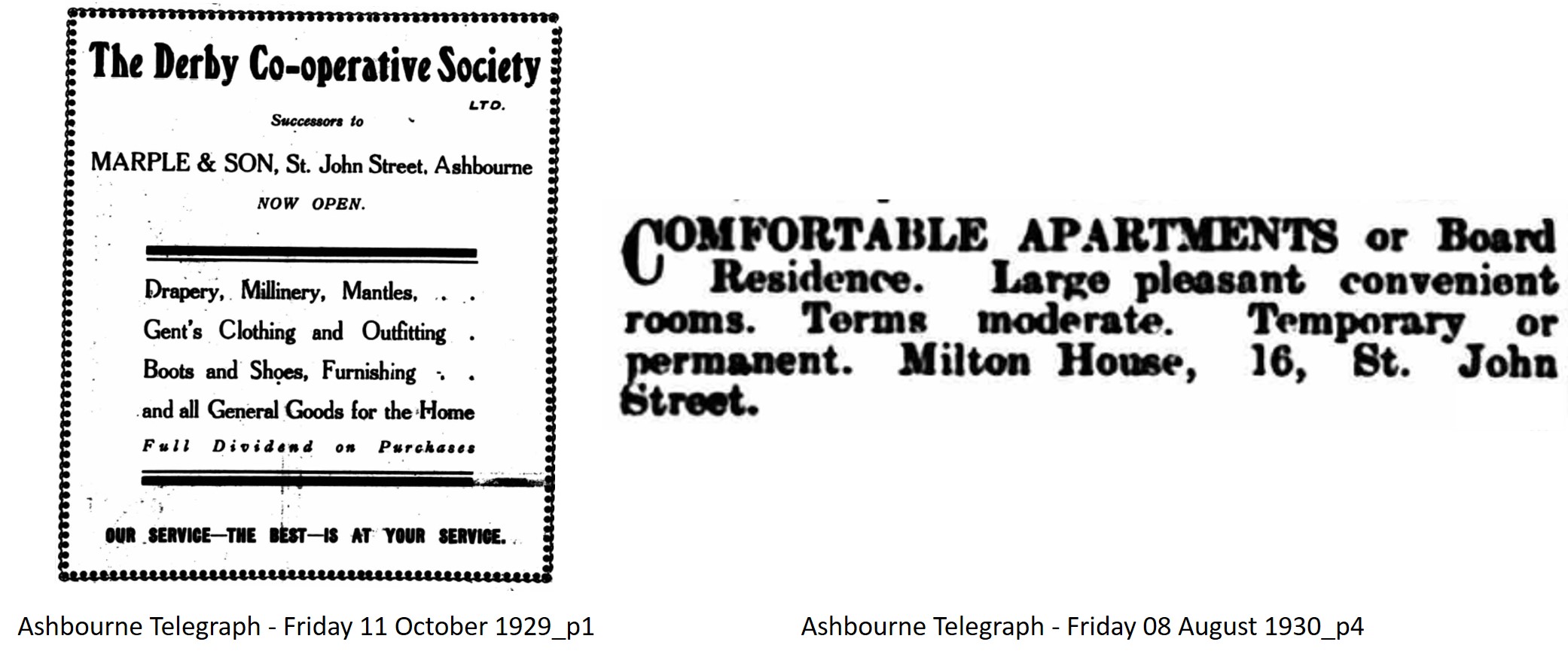
When the Derby Co-operative Drapery Department closed in 1981, 14-16 St John St was converted into two shop units and offices:
14 St John St occupants have been Tracks Records (1982-2005) and Costa Coffee (2006-24).
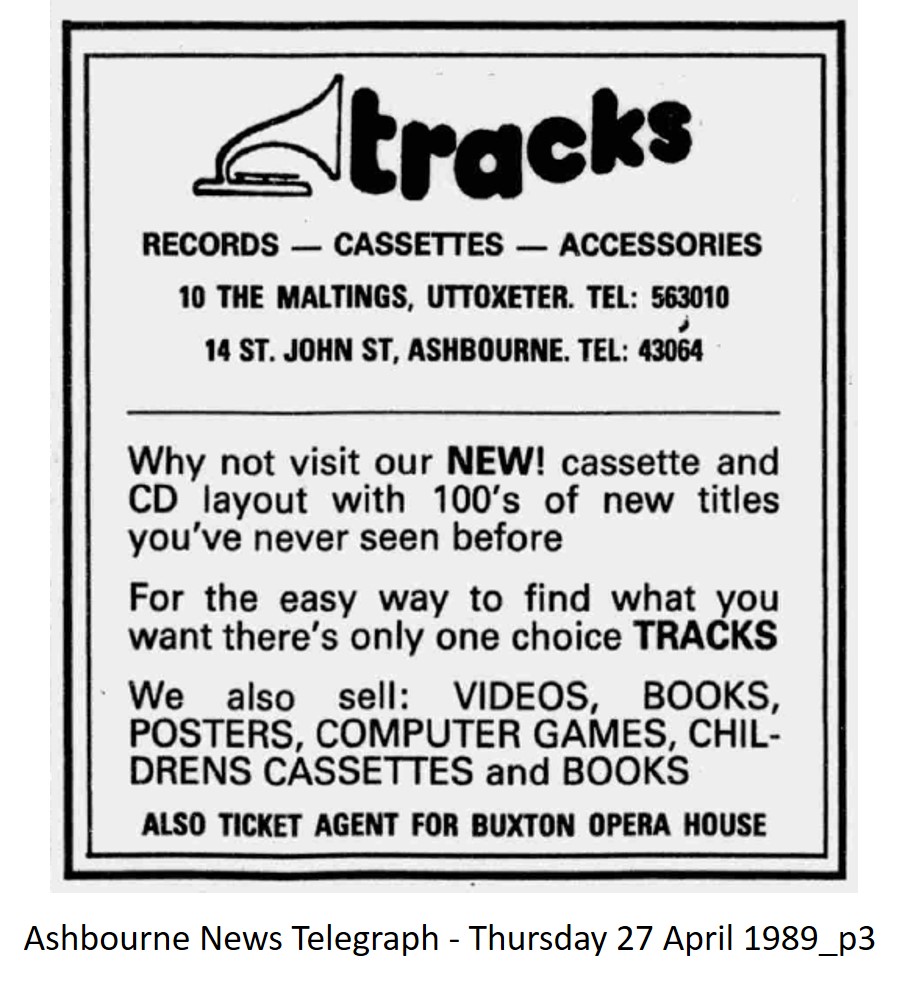
16 St John St occupants have been Desboroughs, garden machinery (1981-89), Country Touch, gifts (1990-92), Ashbourne House, china and crystal (1993-2007), and the British Heart Foundation (2007-24).
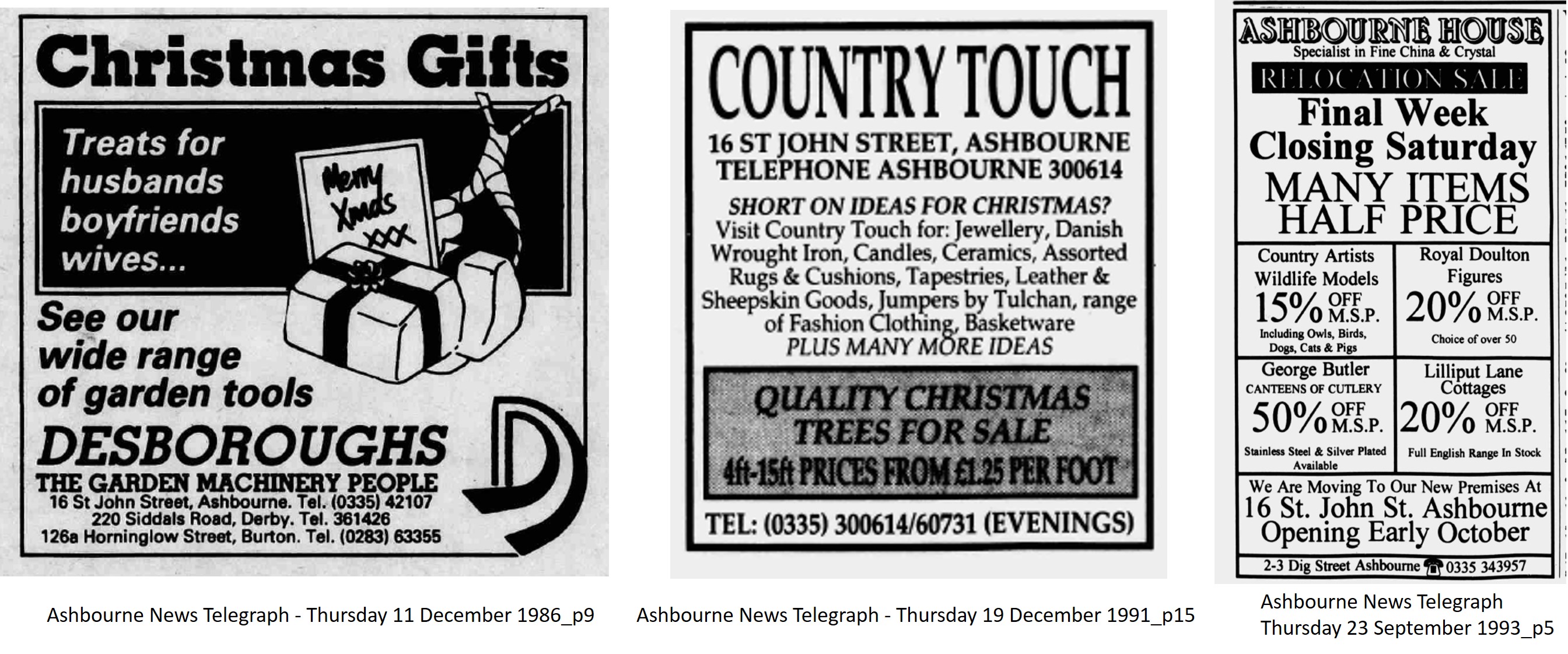
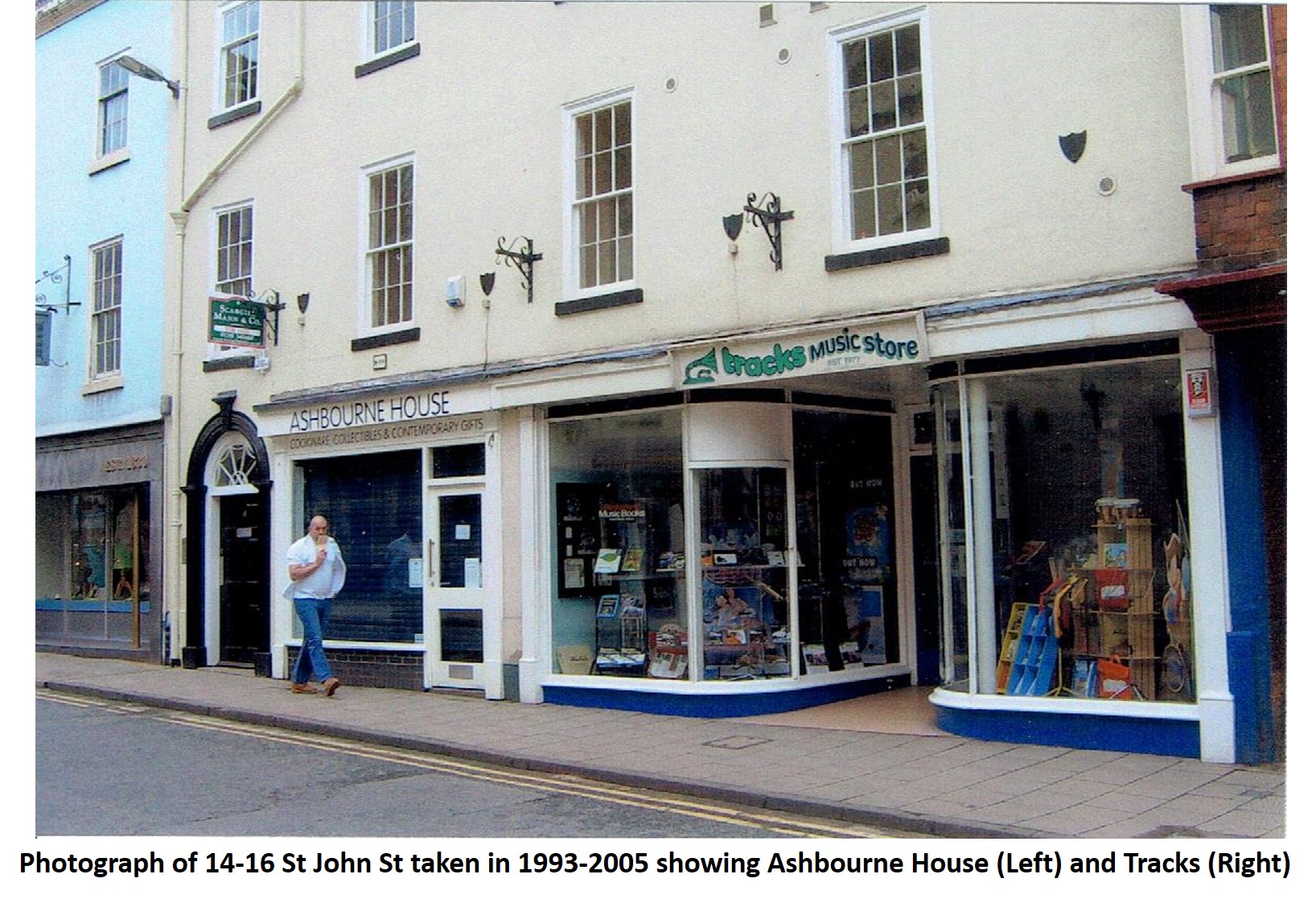
The offices upstairs, where the Barkers had had their boarding house and had been living until about 1966, were occupied in the 1980s-90s by, amongst others, Safeguard Assurance (14 St John St) and Beaver Recruitment (16 St John St).
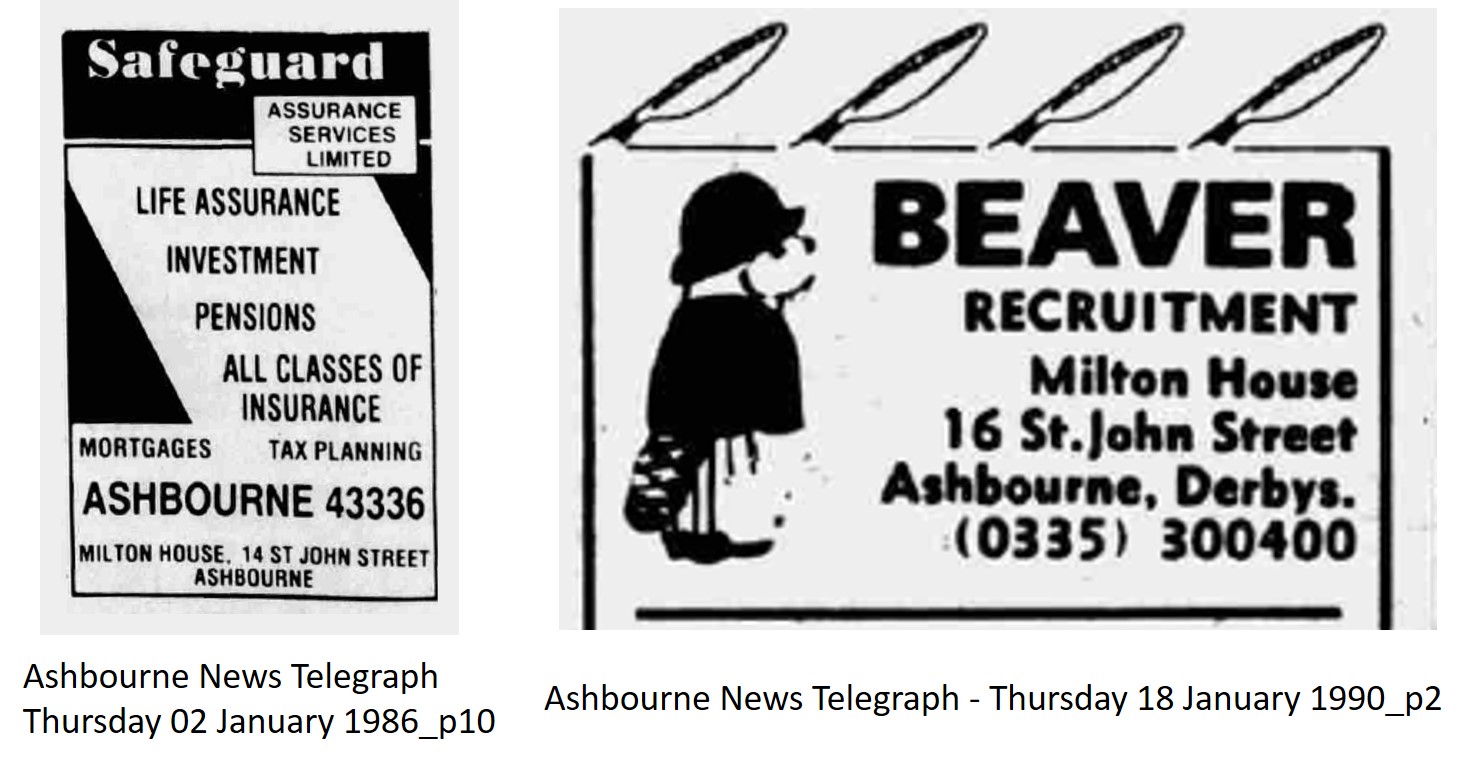
By the mid-2000s, these offices had been converted into four residential flats.
© PaulThompson 2025
You may also be interested in...
